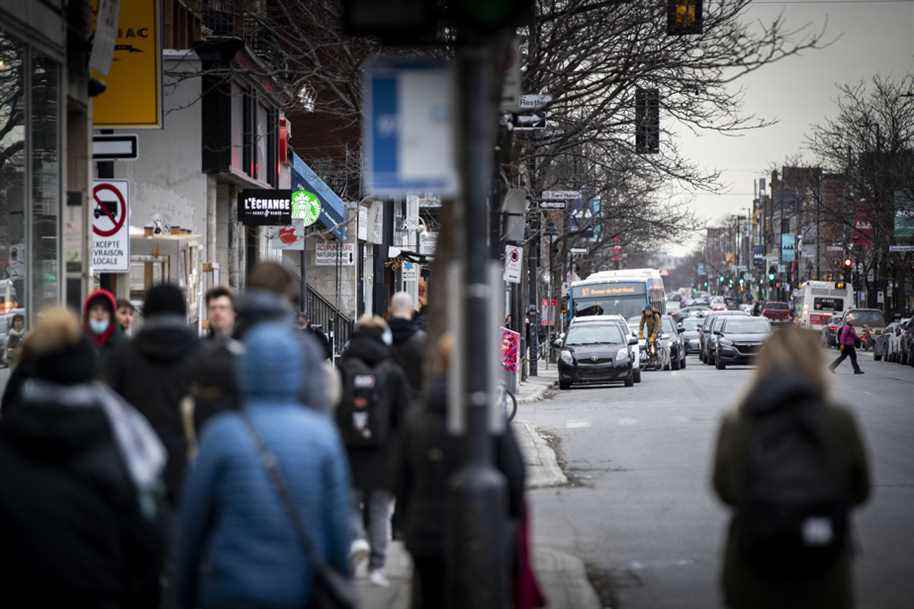As the sixth wave of COVID-19 seems to be running out of steam in Quebec, another influenza is sweeping across the province. If the two phenomena seem distinct, they could be linked, shows a study carried out in the laboratory.
Posted at 5:00 a.m.
Full professor in the department of microbiology-immunology and infectiology of the Faculty of Medicine of Laval University, Dr.r Guy Boivin has studied the relationship between the two viruses.
As part of a study to which he contributed and the results of which were published in February in the journal Viruseshe and his colleagues came to the conclusion that COVID-19 and influenza, the virus that causes the flu, do not cohabit well.
After infecting nasal cells with the first, it was much more difficult for them to introduce the second virus, and vice versa.

PHOTO FROM THE CHU DE QUÉBEC WEBSITE
The Dr Guy Boivin, Full Professor in the Department of Microbiology-Immunology and Infectious Diseases of the Faculty of Medicine at Laval University
“It’s a phenomenon called an antagonist, a viral interference. If it’s true, what we found in the laboratory, and if it’s confirmed at the population level, it could mean that as influenza increases, COVID-19 could decrease during the next few weeks,” he explained in an interview.
A late wave of influenza
Indeed, Quebec is currently hit by a wave of influenza after two years of absence. “Last year, we skipped a year, we hardly saw any cases of influenza listed”, indicates the Dr Bovine.
Even this year, I had come to the conclusion that we would skip another year, but that is not the case, the influenza returned at the beginning of April.
The Dr Guy Boivin, Full Professor in the Department of Microbiology-Immunology and Infectious Diseases of the Faculty of Medicine at Laval University
According to the most recent data from the Institut national de santé publique du Québec (INSPQ), 218 cases of influenza were confirmed in the province during the week of April 10 to 16.
If this figure seems low, you should know that it was close to zero last year. Currently, at 11% of positive influenza screening tests, Quebec is well above the epidemic threshold established at 5% and more, indicates the Dr Bovine.
Moreover, it is an exceptionally late wave, explains the researcher. Normally, influenza experiences its peak activity in winter, in the months of January and February. “It’s the first time I’ve seen this in 25 years, with the exception of 2009 when we had the H1N1 pandemic and where we had cases of influenza which occurred in April, May or June. »
The exact causes of this phenomenon are difficult to establish. First, the confinement of the beginning of the year, where contacts were restricted, then the deconfinement of the end of winter can explain it in part, indicates the Dr Bovine. “We must also take into account climatic phenomena, temperatures, humidity […]and the phenomenon of viral interference can come into play”, he specifies.
Not to be taken lightly
But is seeing influenza supplanting COVID-19 good news? Admittedly, the coronavirus has a higher mortality rate, but the flu also kills, recalls the Dr Bovine. If, in 2016, the flu caused relatively few deaths in Quebec, i.e. 213, it had caused 1044 in 2018.
It’s not trivial, it shouldn’t be taken lightly.
The Dr Guy Boivin
In addition, the phenomenon of “viral interference” between COVID-19 and influenza does not prevent a “co-infection”, that is to say a simultaneous infection with the two viruses, he specifies. . A case of this phenomenon has also been reported recently in the Capitale-Nationale region, adds the Dr Bovine.
Most observed at the start of the COVID-19 pandemic, in March 2020, at the very end of the last wave of influenza in Quebec, cases of “co-infection” can cause a much more serious illness, according to a British study .

